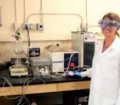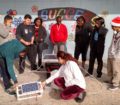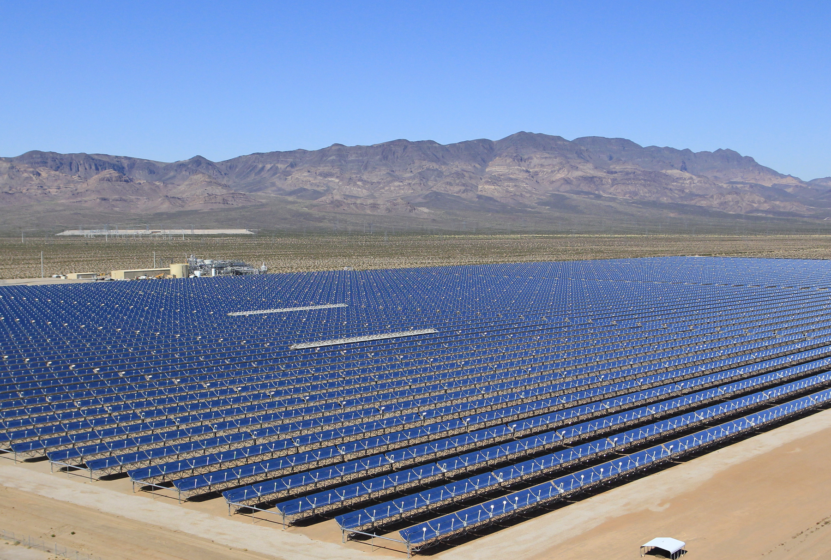Copper Mountain 2 (CM2) Solar Facility, Eldorado Valley, Nevada
–D. Devitt Photo
Sleuthing Solar’s Side Effects
NEXUS researchers investigate solar facilities’ impacts on the local climate and environment
By Jane Palmer
January, 2017
Windier and Warmer
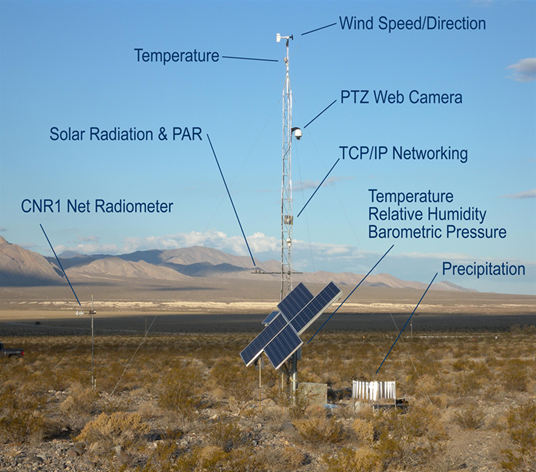
Meteorological tower used to measure microclimate changes due to solar facilities
–D. Devitt Photo
Stemming the Flow
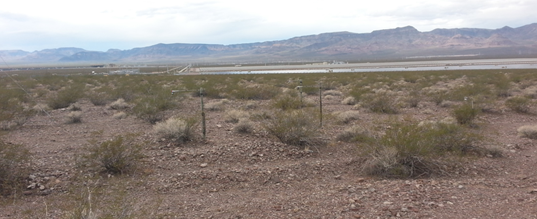
Truncated surface hydrology caused by a solar facility that reduces water flow to plants
–D. Devitt Photo

Flowering Creosote Bush
–D. Devitt Photo
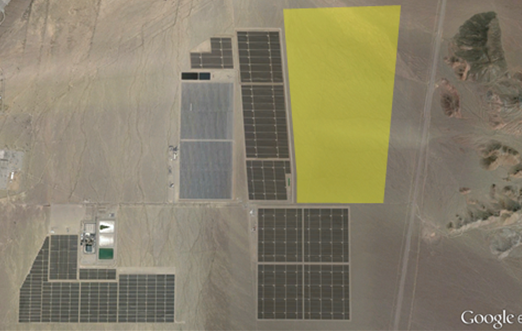
Solar Facility
–Google Maps
Probing Solar Energy’s Impacts on the Environment
Understanding the environmental impacts of solar energy projects is one of the five core objectives of the NEXUS project. To this end, through field studies on the ground, NEXUS scientists are investigating the impacts of solar facilities and panels on microclimates, surface hydrology, and rainfall distribution and infiltration. From the skies, via remote sensing, NEXUS scientists are determining whether the installation of solar facilities is changing the landscape cover and temperature of the local environment. In the instances where the construction or operation of solar facilities has impacted the surrounding ecology, NEXUS researchers are working to assess and implement restoration treatments. “Our NEXUS environmental research is creating science-based information that land-use agencies can use for designing effective ways to manage and mitigate environmental issues associated with large-scale solar plant development”, says Dr. Gayle Dana, NEXUS Project Director. “So we are instrumental in producing information that decision-makers can use in evaluating energy versus environmental tradeoffs for solar energy investments.”
_______________________________________

NEXUS Notes is a monthly publication of the Solar Nexus Project, which is a five-year research project funded by the National Science Foundation’s Experimental Program to Stimulate Competitive Research “EPSCoR” (Cooperative Agreement #IIA-1301726) focusing on the nexus of (or linkage between) solar energy generation and Nevada’s limited water resources and fragile environment.
Any opinions, findings, and conclusions or recommendations expressed in this material are those of the author(s) and do not necessarily reflect the views of the National Science Foundation.
_______________________________________
If you would like to know more about the NEXUS project,
please contact, Dr. Gayle Dana
Gayle.Dana@dri.edu
530-414-3170
_______________________________________

